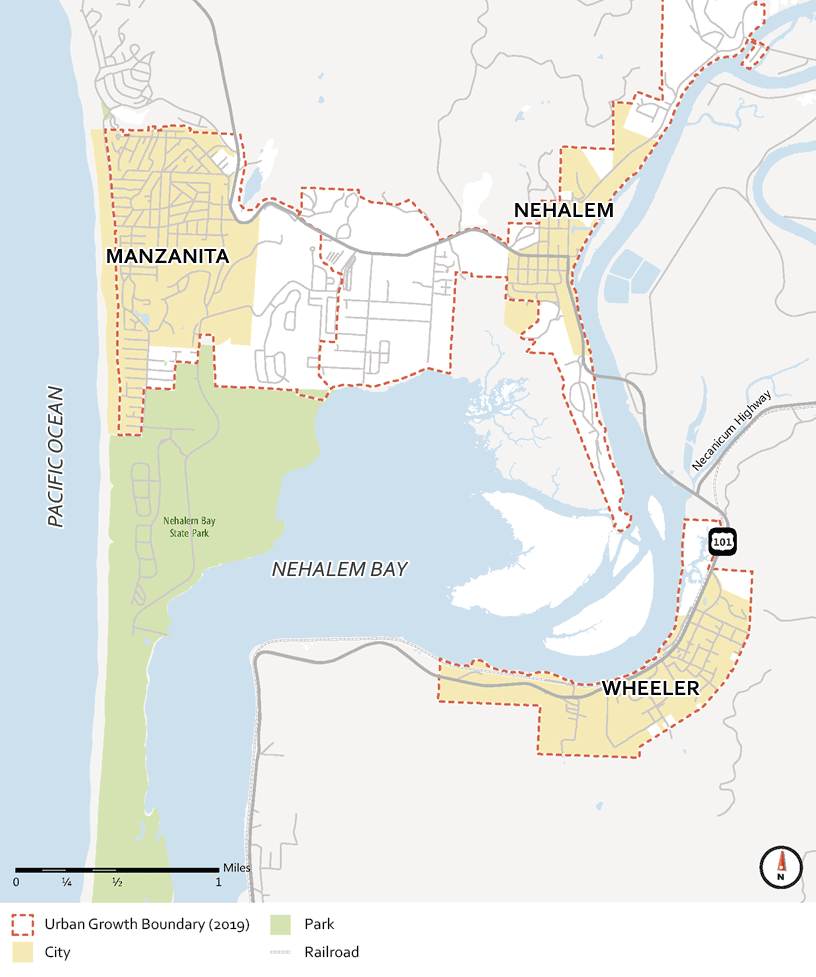 (Project Area - Click to enlarge)
(Project Area - Click to enlarge)What is the TSP?
The TSP will describe transportation goals, policies, project investments and strategies for the next 20 years. The final TSP will guide Manzanita, Nehalem and Wheeler in decisions about new transportation projects and programs, and will consider travel needs for people who walk, use cars, ride bicycles, move freight, or ride the bus.
Stations
On this open house site there are a series of "stations" where you can learn about the project and provide input. Go directly to a station using the buttons above, or click "Next" to move through the stations in order.